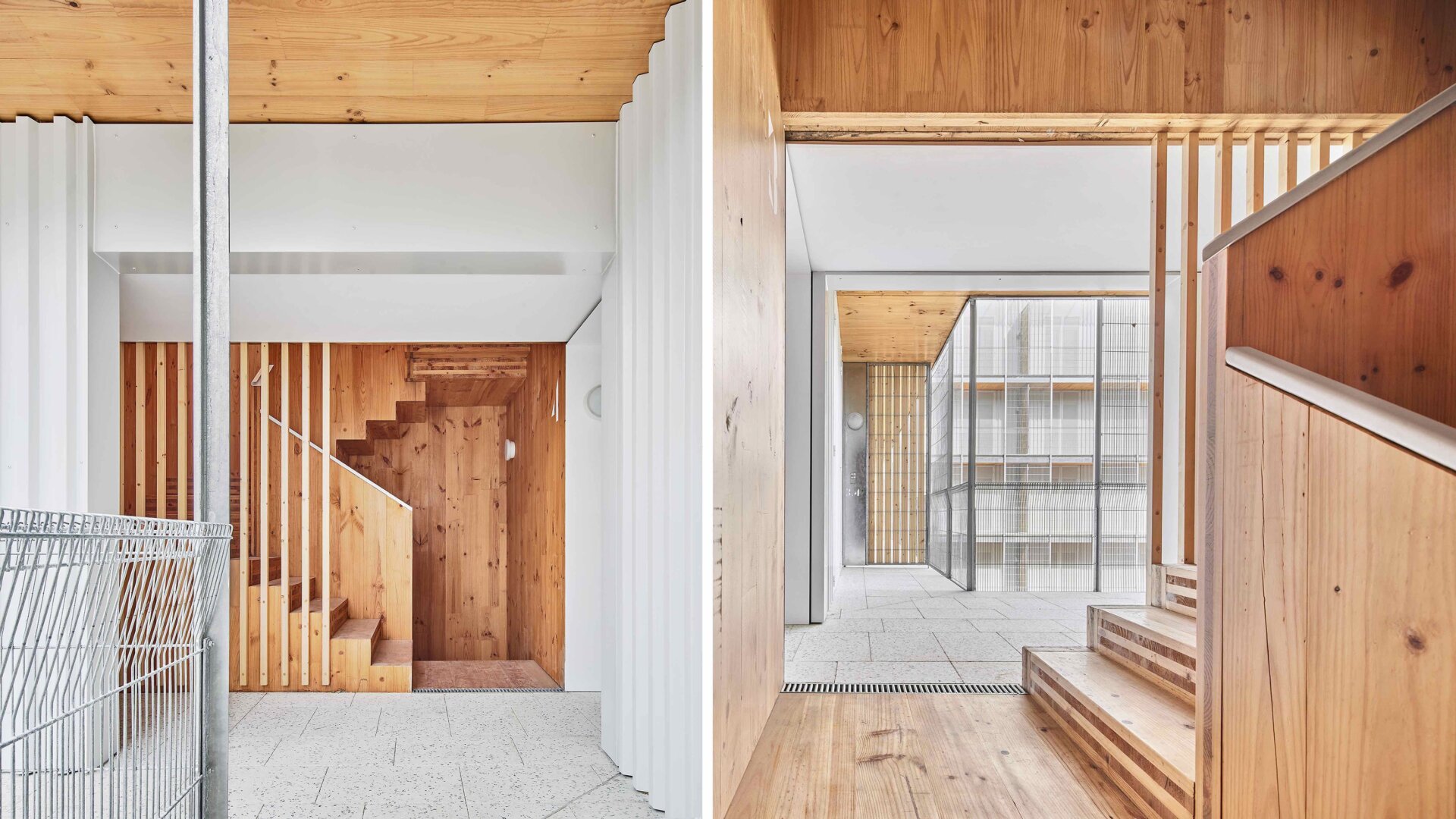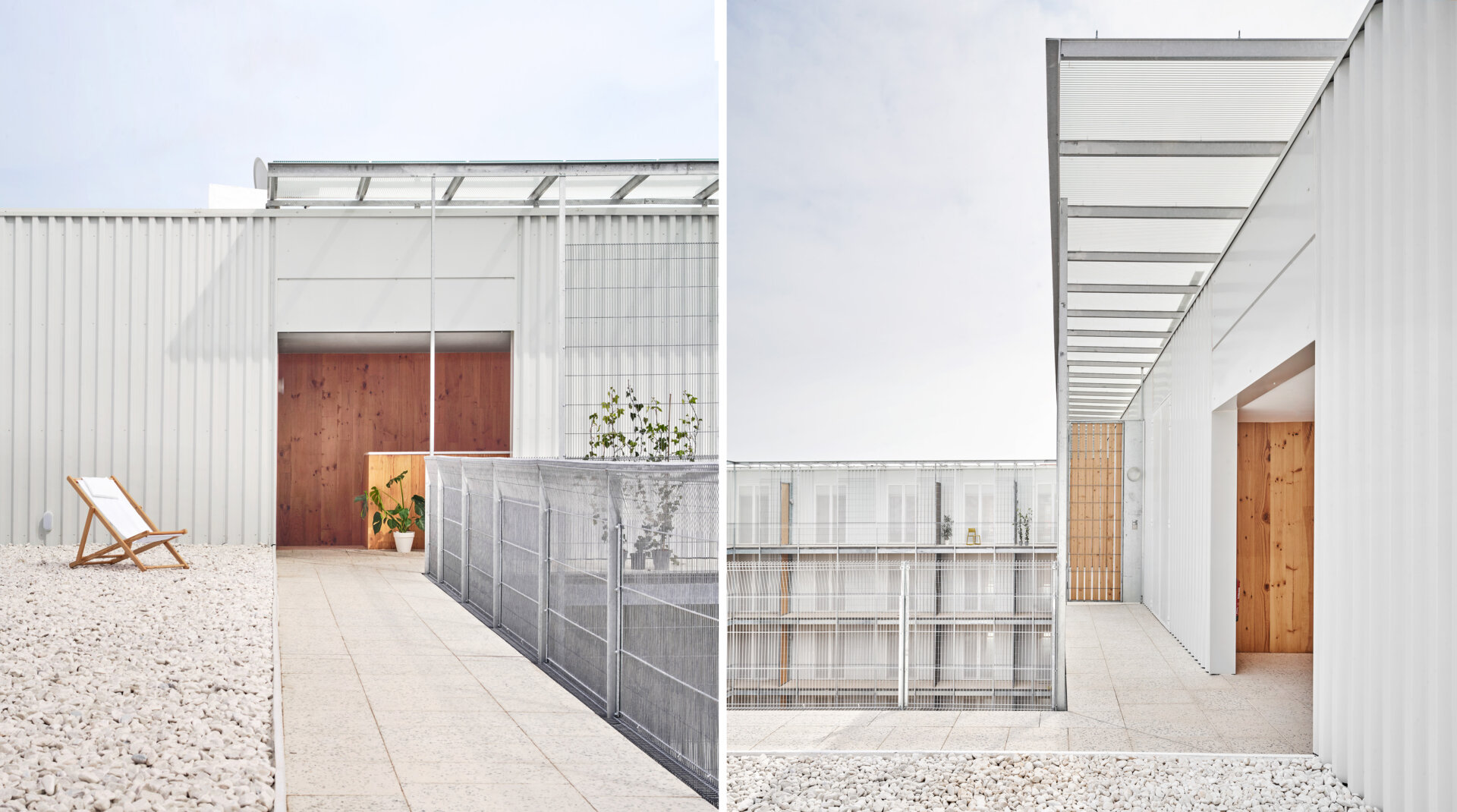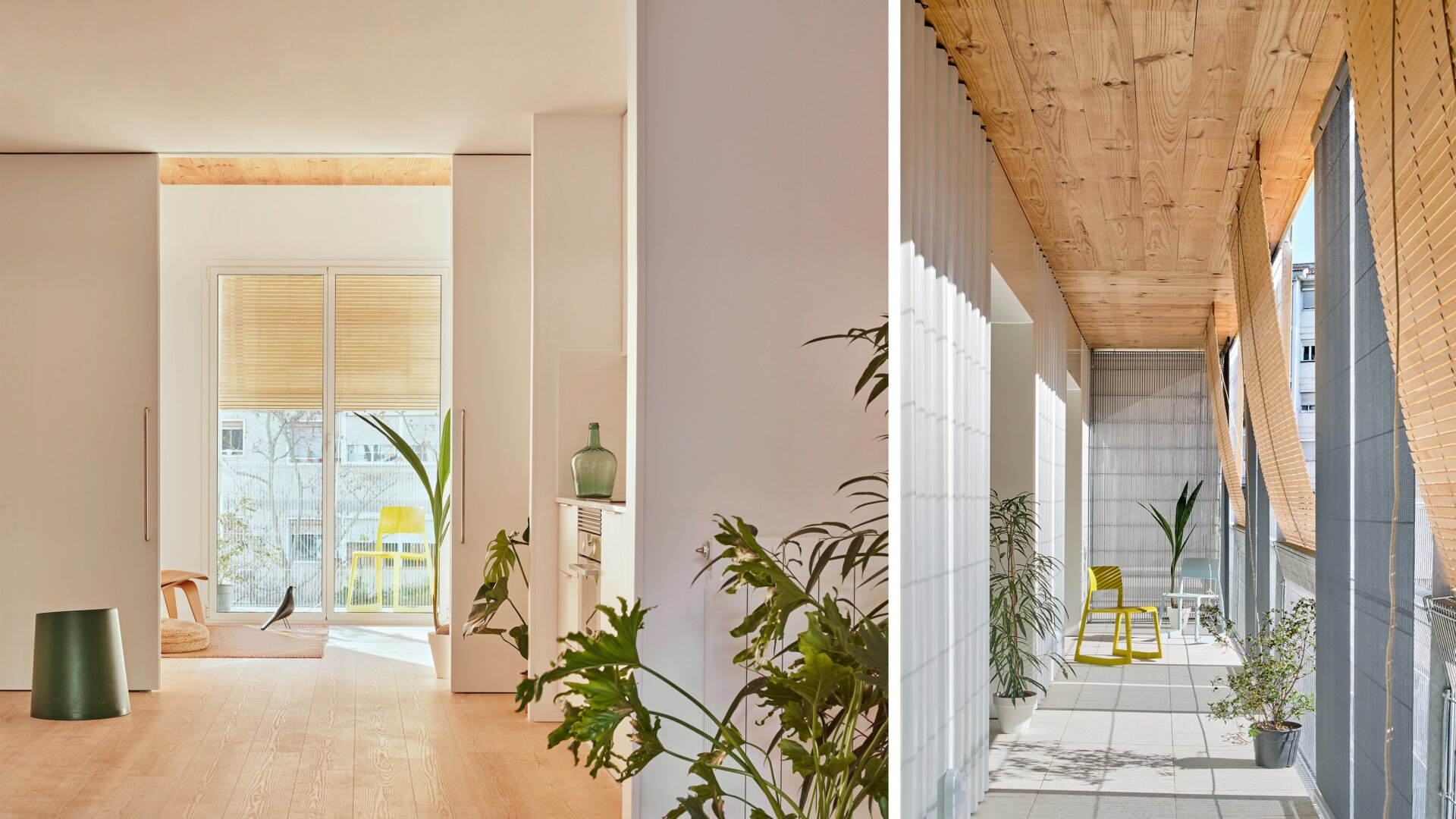
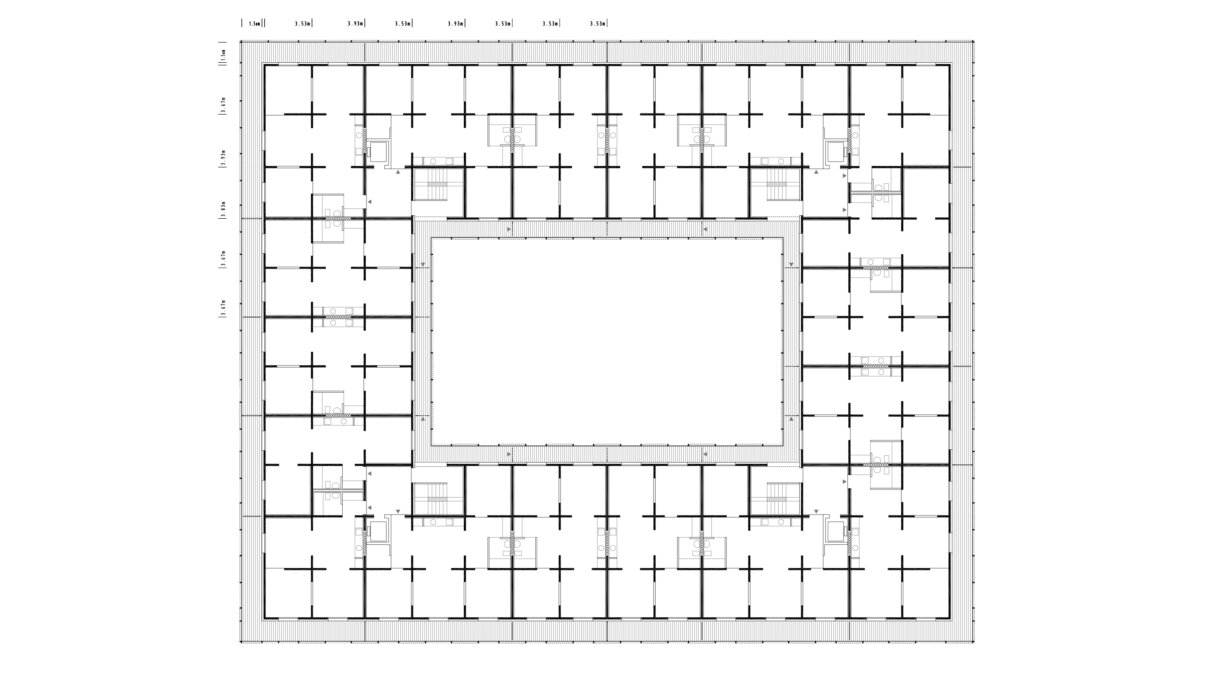

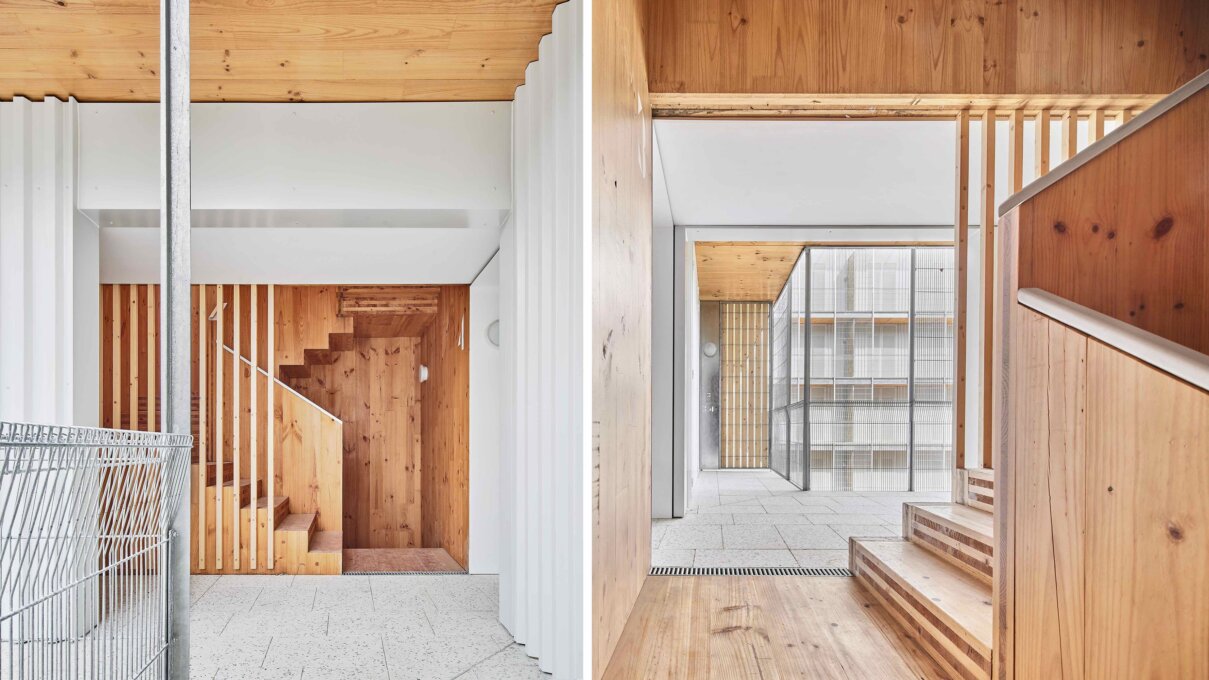
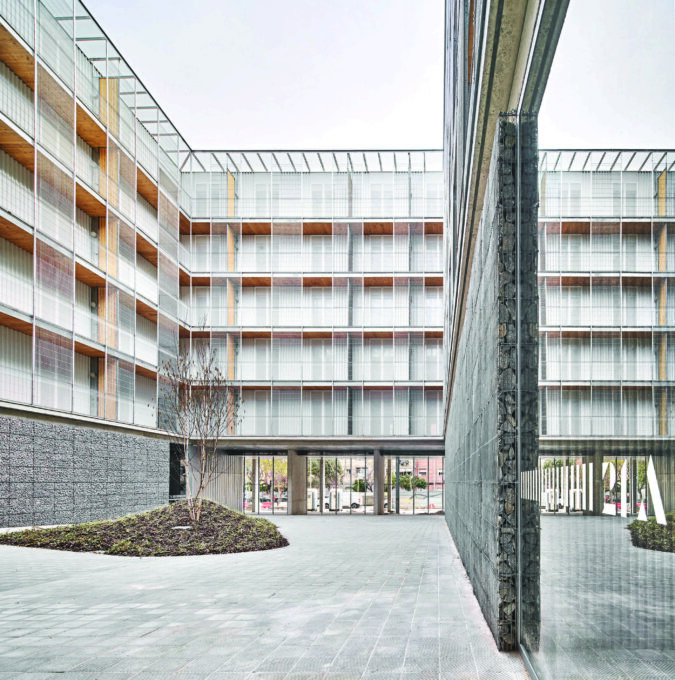

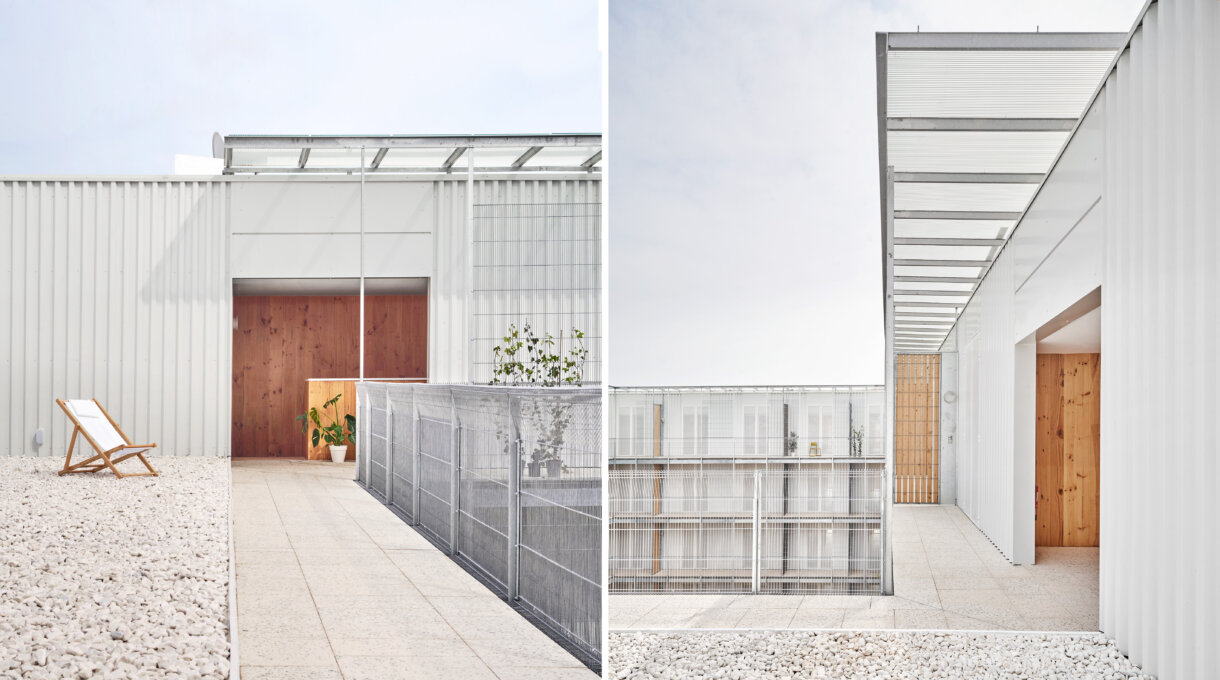
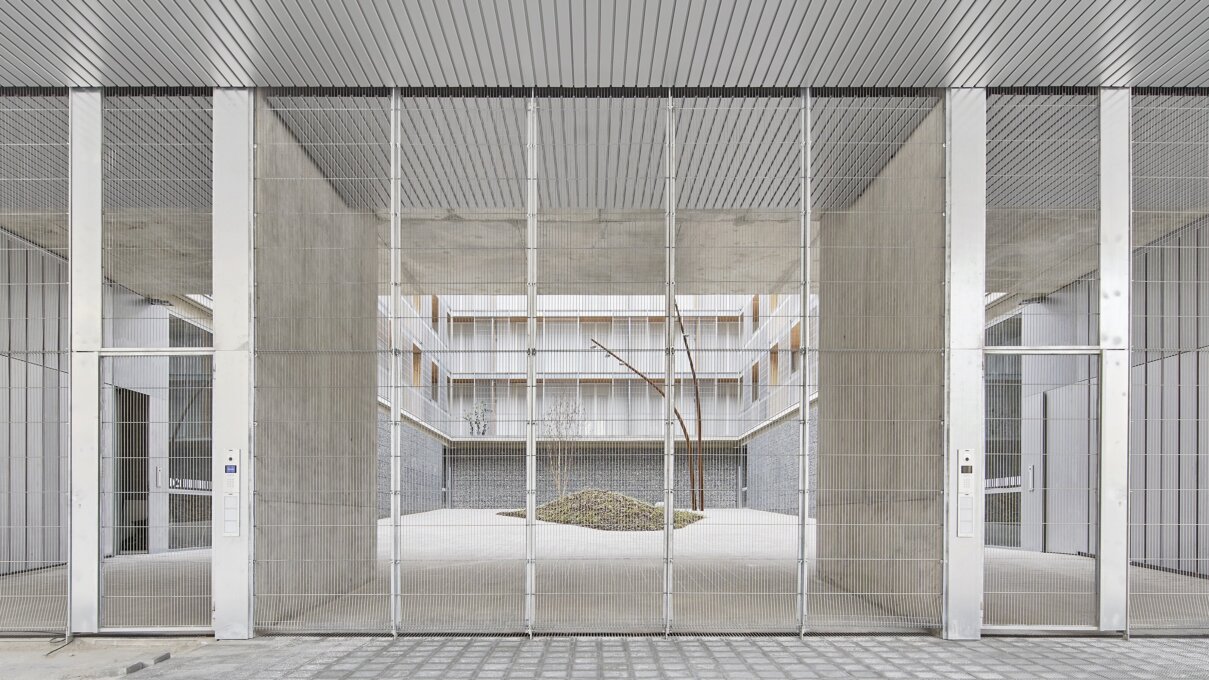




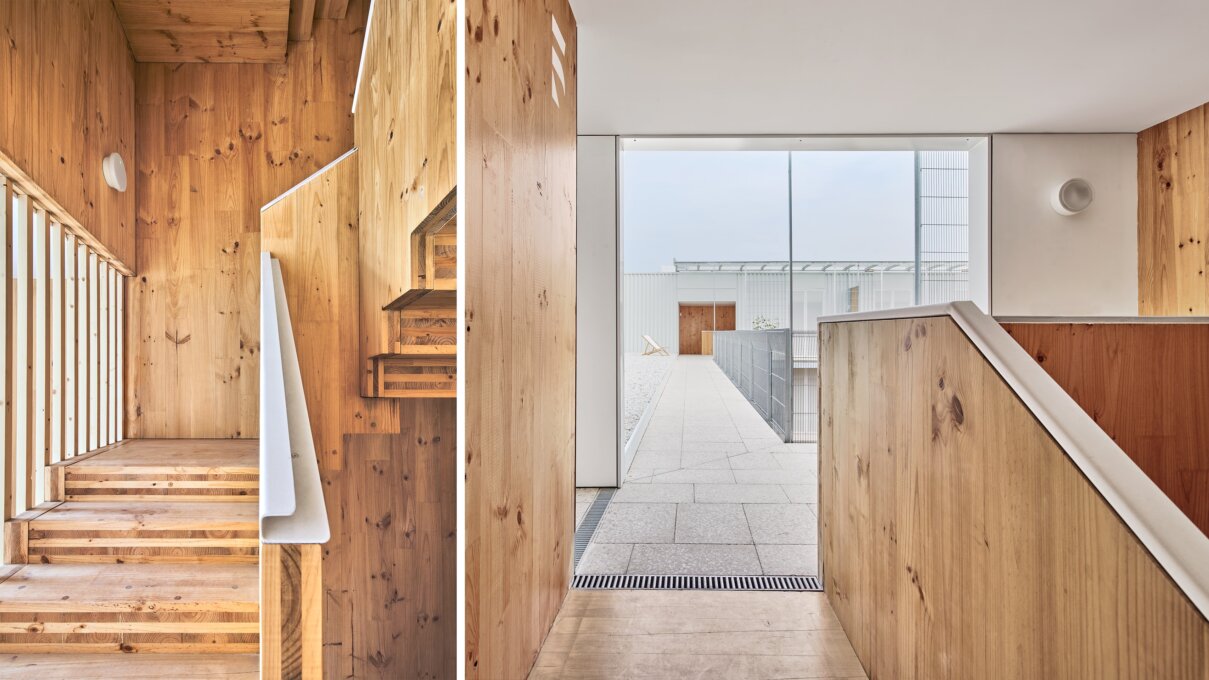
Share to
85 Social Housing Units in Cornellà
By : PERIS+TORAL ARQUITECTES - MARTA PERIS - JOSE TORAL
GRANDS PRIX DU DESIGN – 15th edition
Discipline : Architecture : Award of the Year Winner, Grand Winner
Categories : Residential Building / Apartment & Condo of 5 to 9 storeys : Gold Certification, Platinum Winner
Categories : Special Award / Architecture + Wood : Gold Certification
Categories : Residential Building / Affordable Housing : Platinum Winner, Gold Certification
For the 10,000 m2 of built surface area of the new building in Cornellà de Llobregat (Barcelona), consisting of 85 social housing units laid out on five levels, a total of 8,300 m2 of zero kilometre timber from the Basque Country has been used.
The bases of this new residential building are a matrix of communicating rooms that eliminates corridors to guarantee optimum use of the floor plan and the use of timber to enable the industrialization of elements, improved quality of construction and a major reduction of deadlines and C02 emissions.
The building is organized around a courtyard that articulates a sequence of intermediate spaces. On the ground floor, a porch opens up to the city, anticipating the doorway of the building and filtering the relationship between public space and the courtyard that acts as a small plaza for the community. Instead of entering directly and independently from the outer façade to each lobby of the building, the four vertical communication shafts are situated at the four corners of the courtyard so that all the occupants converge and meet in the plaza, which represents a safe space from a gender perspective. On the model floor, entry to the apartments is from the communication shaft and the private terraces that make up the ring of outdoor spaces that overlook the courtyard. The building’s general floor plan is a matrix of communicating rooms. There are 114 spaces per floor and 543 in the building, all of similar dimensions, eliminating both private and community corridors to make the maximum use of the floor space. The server spaces are laid out in the central ring, while the rest of the rooms, of undifferentiated use and size (13 m2), in the façade, accommodate different forms of occupation. The surface area and proportion of the rooms allow generous corners as a support that facilitates the appropriation of space. Another terrace in the outer ring completes the spatial sequence: a row of spaces interconnected by large openings, permeable to fresh air, the gaze and movement.
The 85 housing units are divided into four groups with a total of 18 per floor. Four or five homes are laid out around the communication shaft, ensuring that all the typologies are cross-ventilated and face two directions.
The apartments consist of five or six modules, depending on whether they have two or three rooms. The inclusive open-plan kitchen is located in the central room, acting as an element of distribution that replaces the corridors, at the same time making domestic work visible and avoiding gender roles.
The size of the rooms, in addition to offering flexibility based on ambiguity of use and functional indeterminacy, ensures an optimal bay for the wooden structure. In order to achieve the economic viability required in social housing, the volume of wood required per square metre of construction has been optimized, representing 0.24 m3 per square metre of built surface area.
Collaboration
Engineering : Societat Organica






